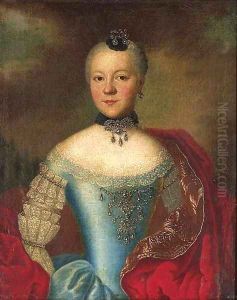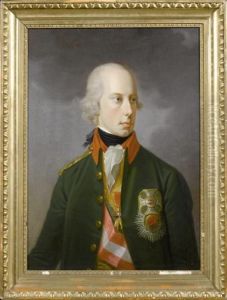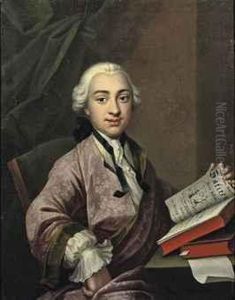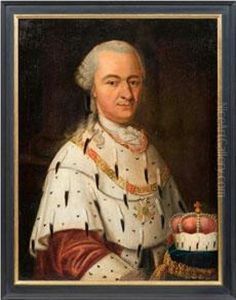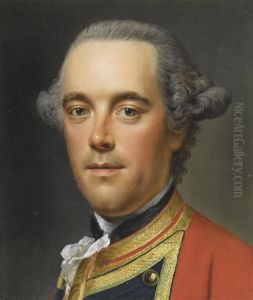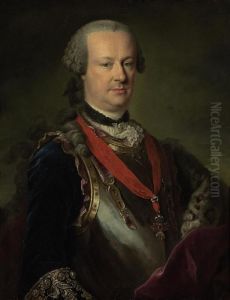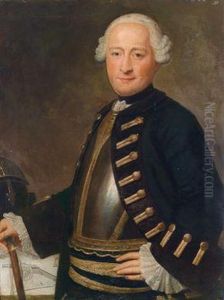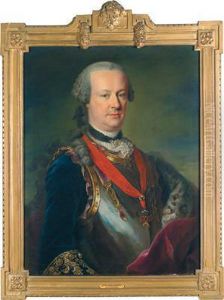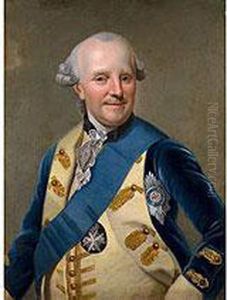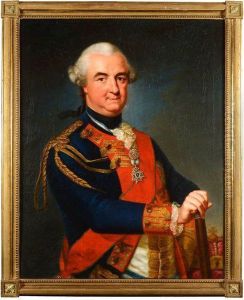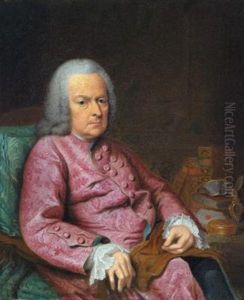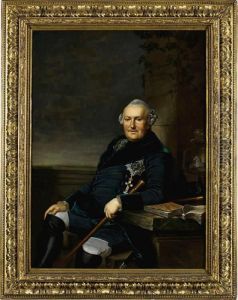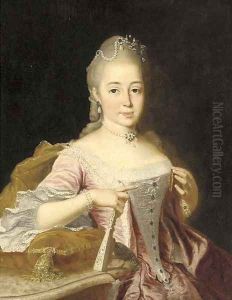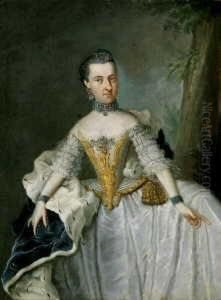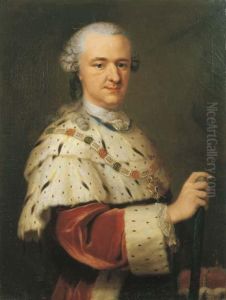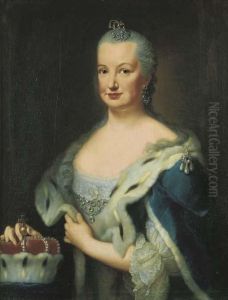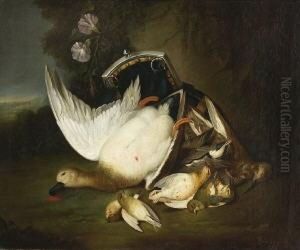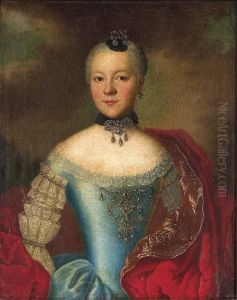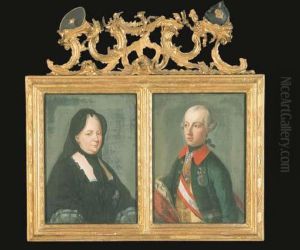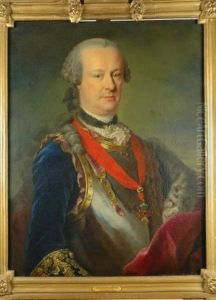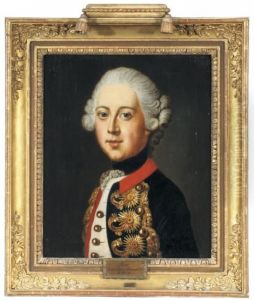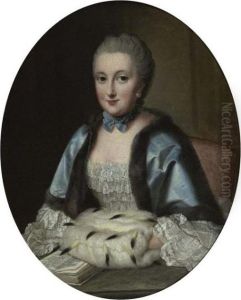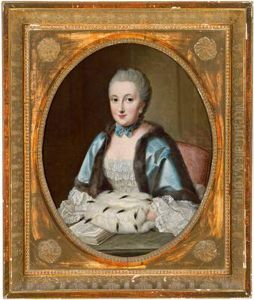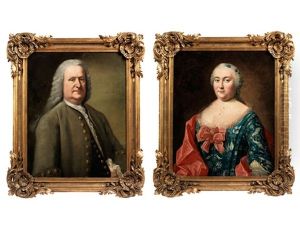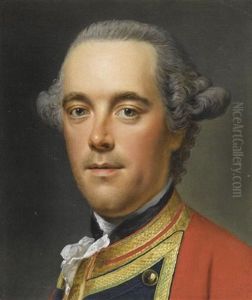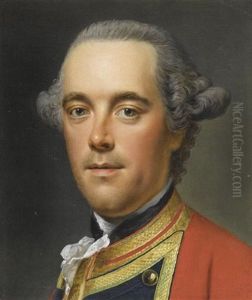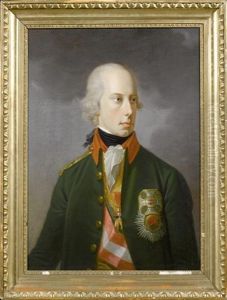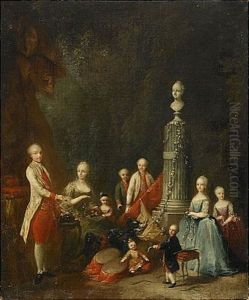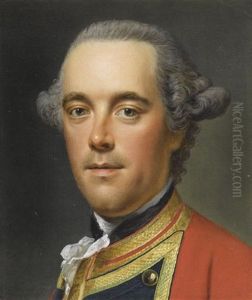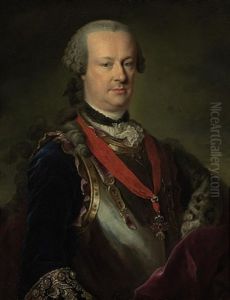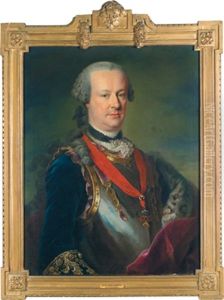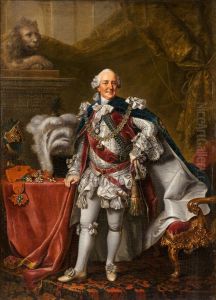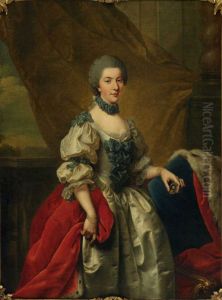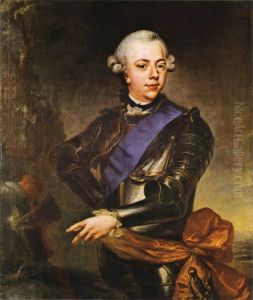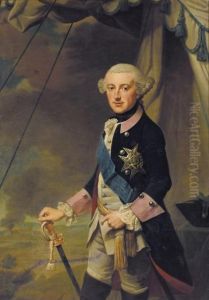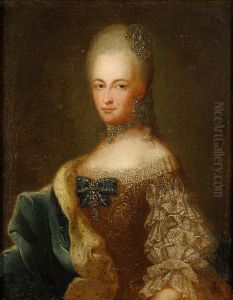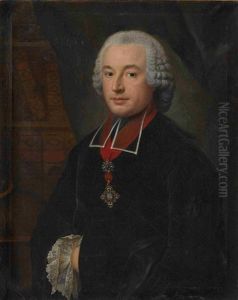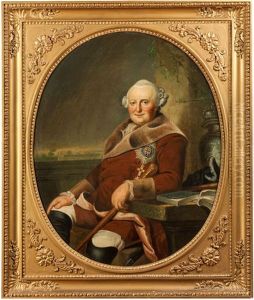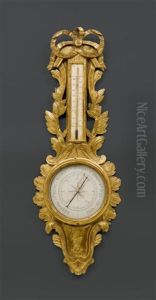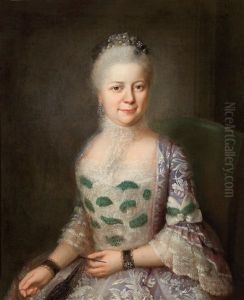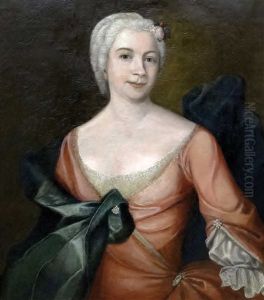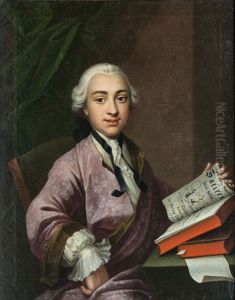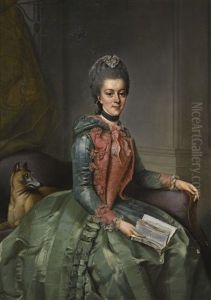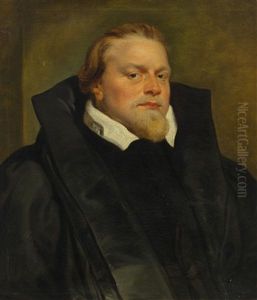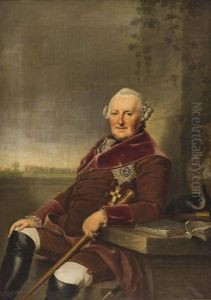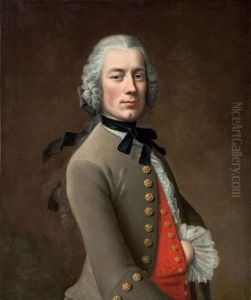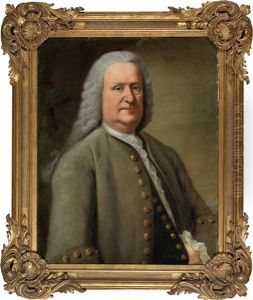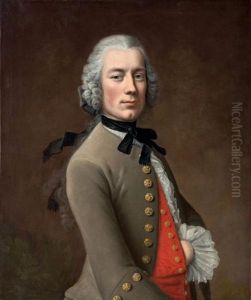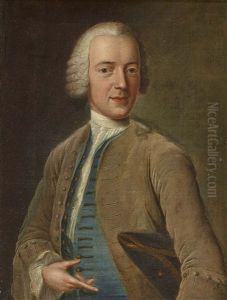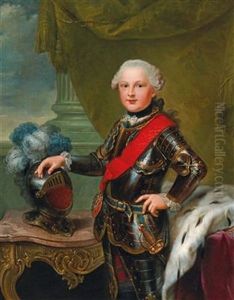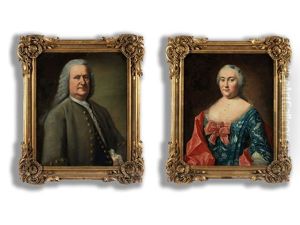Johann Georg Ziesenis Paintings
Johann Georg Ziesenis was a notable German portrait painter born in Copenhagen, Denmark, in 1716. He came from a family of artists; his father, Johann Jürgen Ziesenis, was also a painter. Ziesenis' work is characterized by its Rococo style, which was prevalent in the eighteenth century, marked by elegance, lightness, and an emphasis on graceful lines and gentle coloration.
Ziesenis began his artistic training under his father's tutelage before moving to Paris to further his education. There, he was influenced by French artists of the time, which is reflected in the sophistication and style of his later works. He then traveled to Mannheim, Germany, where he became the court painter to the Elector Palatine Karl Theodor. This position not only granted him significant prestige but also provided him with a steady stream of commissions from the court and the local aristocracy.
Throughout his career, Johann Georg Ziesenis was renowned for his ability to capture the likeness and personality of his subjects. He painted portraits of several members of the European nobility, including King Christian VII of Denmark and Queen Charlotte of England. His portraits are noted for their realistic representation and subtle treatment of textures, particularly in the depiction of fabrics and lace, which was a common feature in the attire of his sitters.
Ziesenis' work was widely appreciated during his lifetime, and he enjoyed a successful career. He spent the latter part of his life in Hannover, where he continued to work for the court and other patrons. He passed away in 1776, leaving behind a legacy as one of the significant portrait painters of the German Rococo era. His paintings can be found in various art collections and museums across Europe, and they continue to be studied and admired for their artistic qualities and historical importance.
